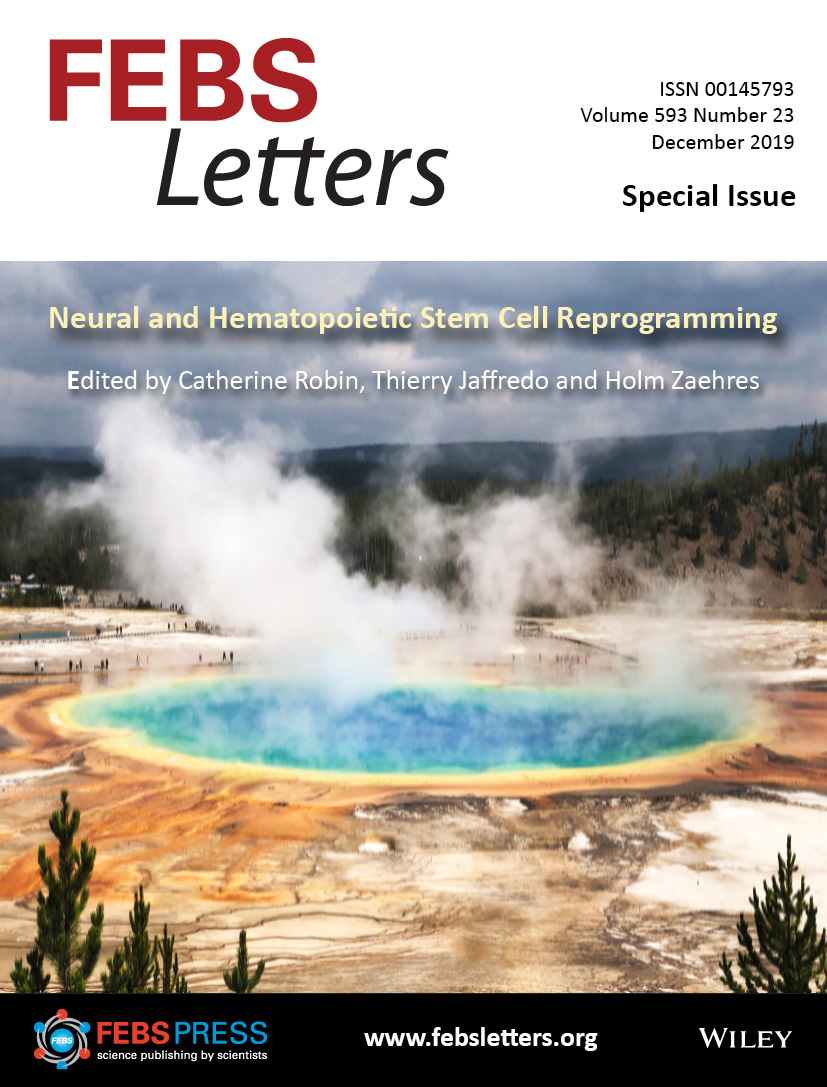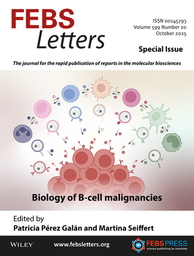Neural and Hematopoietic Stem Cell Reprogramming Special Issue

Editorial
Stem cell reprogramming: blood, neurons, and beyond
Catherine Robin, Thierry Jaffredo and Holm Zaehres

Reprogramming is the ability to change the fate of a cell to another one. A science(‐fiction) technology that has long been unthinkable in the real world. Who would have ever bet that cell reprogramming could become a reality and rewrite some of the key rules of biology? During development, the fate of a cell and its differentiation program are dictated by a complex process involving specific transcription factors and epigenetic networks. This process appears to be ineluctable, since or even prior to its inception. However, in 1958, Sir John Gurdon demonstrated that reprogramming could be achieved by somatic cell nuclear transfer (SCNT). His pioneering experiments showed that nuclei from differentiated intestinal epithelial cells reacquired an embryonic state when transferred into enucleated frog eggs. The birth of normal tadpoles formally proved that the nucleus of differentiated cells contains all information needed to produce again all cell types in an organism. Almost 50 years later, Takahashi and Yamanaka demonstrated that the fate of a terminally differentiated cell is not ineluctable. In a groundbreaking study, they reprogrammed both murine and human fibroblasts to a stem cell fate by ‘simply’ introducing a few defined transcription factors (Oct4, Sox2, Klf4, c‐Myc). Subcultivation of these reprogrammed fibroblasts led to the formation of induced pluripotent stem cells (iPSCs), which are morphologically and functionally almost identical to embryonic stem cells. In this way, it is possible to avoid embryo destruction and to reduce animal experimentation. Mature/specialized somatic cells can also be directly reprogrammed (or transdifferentiated) into other cell types with comparable levels of differentiation using lineage‐specific transcription factors. This approach was introduced by Lassar in 1987 and, as it avoids the induction of pluripotency, is potentially safer than iPSC differentiation.
The excitement about SCNT, iPSCs, and direct cell reprogramming is partly due to the prospective therapeutic use of reprogrammed cells. For example, reprogramming and repurposing of endogenous cells in vivo, directly at sites of tissue damage, would overcome the difficulty in finding or transplanting compatible donor cells, tissues, and/or organs. Besides therapeutic purposes, cell reprogramming also offers the opportunity to screen for effective therapeutics (i.e., drug efficiency and toxicity), to generate patient cell‐derived models to study disease mechanism and to perform gene therapy. Very interestingly, most aging hallmarks are erased during cell reprogramming, which provides an exciting tool to study aging versus rejuvenation with the idea of being able to rejuvenate an organ or even the whole organism one day.
Replacement of cells lost due to disease or injury is a major goal of regenerative medicine. This is particularly important for patients with chronic and/or incurable diseases caused by the loss of a certain cell type, such as type‐1 diabetes and Parkinson, or upon irreversible spinal cord injuries. Reprogrammed cells could be either transplanted or transfused, directly or after modification (e.g., gene correction, gene addition, introduction of therapeutic molecules, among others). iPSC technology, which erases genetic and epigenetic modifications, holds promises to reprogram cancer cells to reacquire stemness properties and to lose uncontrolled proliferative capacities. The use of patient‐specific somatic cells derived from autologous iPSCs or HLA‐compatible allogenic iPSCs would overcome the current disadvantages of organ transplantation, such as graft versus host disease, the need for immunosuppressive treatment, and possible cell‐borne diseases. The direct reprogramming of somatic cells would be even more advantageous as it is less expensive, easier, and more efficient compared to iPSC protocols. Moreover, it also reduces the risk of malignant transformation, because cells do not pass through a pluripotent state that may lead to uncontrolled proliferation in vivo.
Nevertheless, genetic and epigenetic changes promoting carcinogenesis could occur during the transdifferentiation process. Therefore, safe therapeutic use of reprogrammed cells is currently being evaluated in preclinical studies. In particular, tumors may arise due to (a) the use of proto‐oncogenes highly expressed in metastatic cancers as reprogramming factors, (b) insertional mutagenesis upon integration of certain reprogramming vectors into the DNA, (c) uncontrolled cell proliferation, and (d) the presence of residual iPS‐like cells endowed with the ability to form somatic tumors after transplantation. Basic research needs to better understand the mechanisms of cell reprogramming and to identify the factors that limit the efficiency of this process. Importantly, efforts should be made to prolong the culture for weeks or months in order to obtain robust functional cell maturation. This would allow to study the effects and phenotype that arise late in vitro, such as synaptic dysfunction, protein aggregation, and increased sensitivity to environmental factors. Cutting‐edge technologies and tools, such as computational analysis, single‐cell transcriptome analysis, and CRISPR/Cas9, will be instrumental in gaining a more specific and efficient control of cell reprogramming. Progress in stem cell reprogramming will also benefit from advances in other fields, including epigenetics, cancer, senescence, and cell regeneration. Last but not least, technical and ethical guidelines, and a clear legislation are needed for transparent use of reprogrammed cells.
The field of cell reprogramming has provided researchers and clinicians with unlimited access to virtually any cell type, which raises high hopes but also comes with limitations. In this Special Issue of FEBS Letters entitled ‘Neural and Hematopoietic Stem Cell Reprogramming’, we present a collection of peer‐reviewed original articles and reviews authored by select international experts. They discuss the most exciting recent developments in the field, focusing on hematopoietic [1-5] and neural [6-10] (stem) cell generation/reprogramming in vitro. The future research directions and the obstacles ahead are also put into perspective. This Special Issue covers important aspects of stem cell research, such as the clinical translation of reprogrammed cells in cell‐replacement therapy, the necessity for standardized and reproducible protocols and procedures that would make results obtained in different laboratories directly comparable, the economic feasibility of large‐scale facilities for stem cell production (i.e., GMP‐facilities), strong partnerships between academia and the biotech/pharmaceutical industry to best couple basic research to the clinic, and ensuring that cells with a potential therapeutic use do not trigger either alloimmunization or bear diseases.
In short, Chen et al. [1] discuss the recent progress in blood cell reprogramming and the potential use of these cells for disease modeling and therapeutic development; Durán et al.[2] compare and discuss the reprogramming methods used to generate hematopoietic stem and progenitor cells; Daniel et al. [3] describe an improved human hemogenic induction protocol for establishing an in vitro model of human hematopoiesis, which may facilitate disease modeling and provide a basis for a platform for cell‐based therapeutics; Hansen et al. [4] discuss the derivation of erythroid, megakaryoid, and myeloid cells from iPSCs and the obstacles currently hindering therapeutic use; Menegatti et al. [5] review the complex transcriptional network regulating blood cell generation during embryonic development and how this information can help in generating these cells in vitro; Traxler et al. [6] report the most recent advances in direct induced neural (iN) conversion and compare this to other reprogramming‐based neural cell models; Greiner et al. [7] highlight the implications of sex‐related intrinsic mechanisms and different adult stem cell populations (e.g., mesoderm‐derived stem cells, neural stem cells, neural crest‐derived stem cells) for stem cell differentiation and regeneration and for the design of new treatment options; Erharter et al.[8] discuss different approaches to generate induced neural stem cells (iNSCs) and their promising use for disease modeling, autologous cell therapy, and personalized medicine; Birtele et al. [9] report that adding neuronal‐specific microRNAs into different culture media improves neuronal maturation and the acquisition of electrophysiological properties during direct neural reprogramming; and finally, Denoth‐Lippuner and Jessberger [10] take a broader perspective discussing how reprogramming might lead to the rejuvenation of a cell, an organ, or even the whole organism.
The picture on the cover shows the grand prismatic spring in the Yellowstone National Park. Water at the center of the spring is so hot that most organisms cannot survive and thereby appears clear and deep blue. As the water spreads out and cools off, it forms concentric circles with different temperature, depth, and sunlight access. This creates a unique set of environmental conditions that support the life of distinct types of thermophilic bacteria. These bacteria produce energy using different types of chlorophyll and carotenoids, which give the spring its prismatic appearance. Just as each bacterial type requires unique environmental conditions and signals acting at the right time and place, so too does the reprogramming of stem cells into a specific and functional cell type in a tissue culture dish. We hope that this Special Issue will shed some light on the pros and cons, difficulties, and hopes in the cell reprogramming field, which has turned science‐fiction dreams into reality over the past decades.
Access the full Special issue on Neural and Hematopoietic Stem Cell reprogramming.
References
- Chen Y, Yi Y, Xu J, Chan W‐K and Loh Y‐H (2019) Re‐entering the pluripotent state from blood lineage: promises and pitfalls of blood reprogramming. FEBS Lett 593, 3244– 3252.
- Barcia Durán JG, Lis R and Rafii S (2019) Haematopoietic stem cell reprogramming and the hope for a universal blood product. FEBS Lett 593, 3253– 3265.
- Daniel MG, Sachs D, Bernitz JM, Fstkchyan Y, Rapp K, Satija N, Law K, Patel F, Gomes AM, Kim HSet al. (2019) Induction of human hemogenesis in adult fibroblasts by defined factors and hematopoietic coculture. FEBS Lett 593, 3266– 3287.
- Hansen M, von Lindern M, van den Akker E and Varga E (2019) Human‐induced pluripotent stem cell‐derived blood products: state of the art and future directions. FEBS Lett 593, 3288– 3303.
- Menegatti S, de Kruijf M, Garcia‐Alegria E, Lacaud G and Kouskoff V (2019) Transcriptional control of blood cell emergence. FEBS Lett 593, 3304– 3315.
- Traxler L, Edenhofer F and Mertens J (2019) Next-generation disease modeling with direct conversion: A new path to old neurons. FEBS Lett 593, 3316– 3337.
- Greiner JFW, Merten M, Kaltschmidt C and Kaltschmidt B (2019) Sexual dimorphisms in adult human neural, mesoderm‐derived, and neural crest‐derived stem cells. FEBS Lett 593, 3338– 3352.
- Erharter A, Rizzi S, Mertens J and Edenhofer F (2019) Take the shortcut – direct conversion of somatic cells into induced neural stem cells and their biomedical applications. FEBS Lett 593, 3353– 3369.
- Birtele M, Sharma Y, Kidnapillai S, Lau S, Stoker TB, Barker RA, Rylander Ottosson D, Drouin‐Ouellet J and Parmar M (2019) Dual modulation of neuron‐specific microRNAs and the REST complex promotes functional maturation of human adult induced neurons. FEBS Lett 593, 3370– 3380.
- Denoth‐Lippuner A and Jessberger S (2019) Mechanisms of cellular rejuvenation. FEBS Lett 593, 3381– 3392.
View the full Special Issue here.
How to cite
Robin, C., Jaffredo, T. and Zaehres, H. (2019), Stem cell reprogramming: blood, neurons, and beyond. FEBS Lett, 593: 3241-3243. doi:10.1002/1873-3468.13660



Join the FEBS Network today
Joining the FEBS Network’s molecular life sciences community enables you to access special content on the site, present your profile, 'follow' contributors, 'comment' on and 'like' content, post your own content, and set up a tailored email digest for updates.